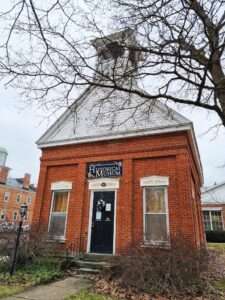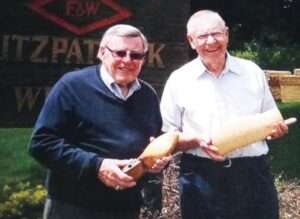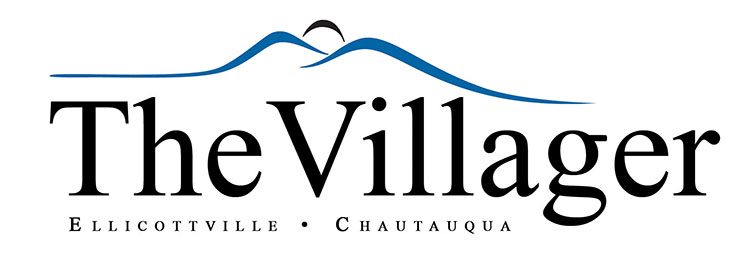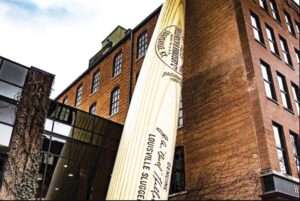By Carol Fisher-Linn
Ellicottville is fortunate to have a museum in the prominent four corners of the village of Ellicottville. It doesn’t get any better than that, or so it would seem. The issue at hand with a museum the size of a teacup is that it lacks storage, working room, and no ability to comfortably allow ready access to the museum archives for research by individuals.
Beginning as a display center in 1956, the operation moved to its present, circa 1853 building in the 1970’s, later obtaining its official charter by the NYS Board of Regents as a museum in 1992. Tim Brown served as President of the Historical Society until he stepped down in 2014 when Dawn Westfall filled the position. The officers and the Board all serve voluntarily, along with individuals who have served in various positions throughout many years. Serving with Westfall are Ellen Frank (V.P.), Carolyn Litchfield (Secretary) and Robert Ellis (Treasurer). Trustees are Gretchen Plough, Judy Brown, Bonnie Koschir, Sara Nuszkowski, and Cathy Lacy. Ellicottville’s Town Historian, Mary Elizabeth Dunbar, was appointed by the previous Town Supervisor.

The museum is a not-for-profit, operating on a budget generously donated by the local municipalities. It is self-sustaining … but could always use some help. Financial donations are always hugely appreciated, and you’ll find a link at the end of this article to their site that facilitates your generosity. Bottom line – they could use a larger building, retaining this one as the walk-in for visitors. If a donated house ever fell into their lap, it would fulfill the dream of archive accessibility for the public, a venue for functions, and maybe a period home where visitors could walk back in time and experience life in in our pioneer days. Patrons might even be able to attend classes of lost pioneer arts. A fully functioning larger local museum could offer these opportunities. Ellicottville deserves this.
What’s the big fuss about preserving items from the local past in a central spot in a community? From History Relevance we learn that “history nurtures personal and collective identity in a diverse world. People discover their place in time through stories of their families, communities, and nation. Museums and their programs teach historical literacy/historical thinking skills, such as critical thinking.”
TV shows like Antiques Road Show, American Pickers, Maine Cabin Masters, and Barnwood Builders are not popular by happenstance. People today have a craving to know what life was like “back then,” to touch it, to experience it, to be a part of it, or to recapture it. Museums do this for people. Every town has its unique story; ours centered around agriculture and lumber and then morphed into a ski town, which started quietly enough but turned into the home of the number 6th popular ski area in the east and home to the largest private ski club in the Unites States. Cool as all that is, we got there because of our foundation of the people who showed up every day and made the Louisville slugger baseball bat billets just down the road from the museum or made wooden shoe lasts (foot forms) on the other side of town which eventually found their way to The Queen’s shoemaker to make her favorite shoes. Yes, that Queen.

Museums connect us to our roots, providing continuity between the past, present, and future. Visitors can benefit by relating what they see here with their own identities. When volunteers work at the museum, they hear comments like, “how did they ever do that?” This builds empathy for those “old-timers.” Yes, museums evoke and engage emotion which can be transferred to people in the present, thereby strengthening connections. Museums help visitors to see things in a different light. Assumptions might be changed; visitors may be surprised to find old ways that they can adapt to new situations. It helps people envision a better future; history inspires leaders. Sharing again from History Relevance, “History, saved and preserved, is the foundation for future generations. Historical knowledge is crucial to protecting democracy. By preserving authentic and meaningful documents, artifacts, images, stories, and places, future generations have a foundation on which to build and know what it means to be a member of the civic community.”
The Ellicottville Museum will be open from June through September. Society meetings are held first Wednesday of the month 7pm, Ellicottville Library. If you would like to donate items, please fill out this donation form and email it to EllicottvilleHistoricalSociety@gmail.com. If you’d like to become a member of The Historical Society you can fill out this membership form and mail it to PO Box 485 Ellicottville NY 14731.

